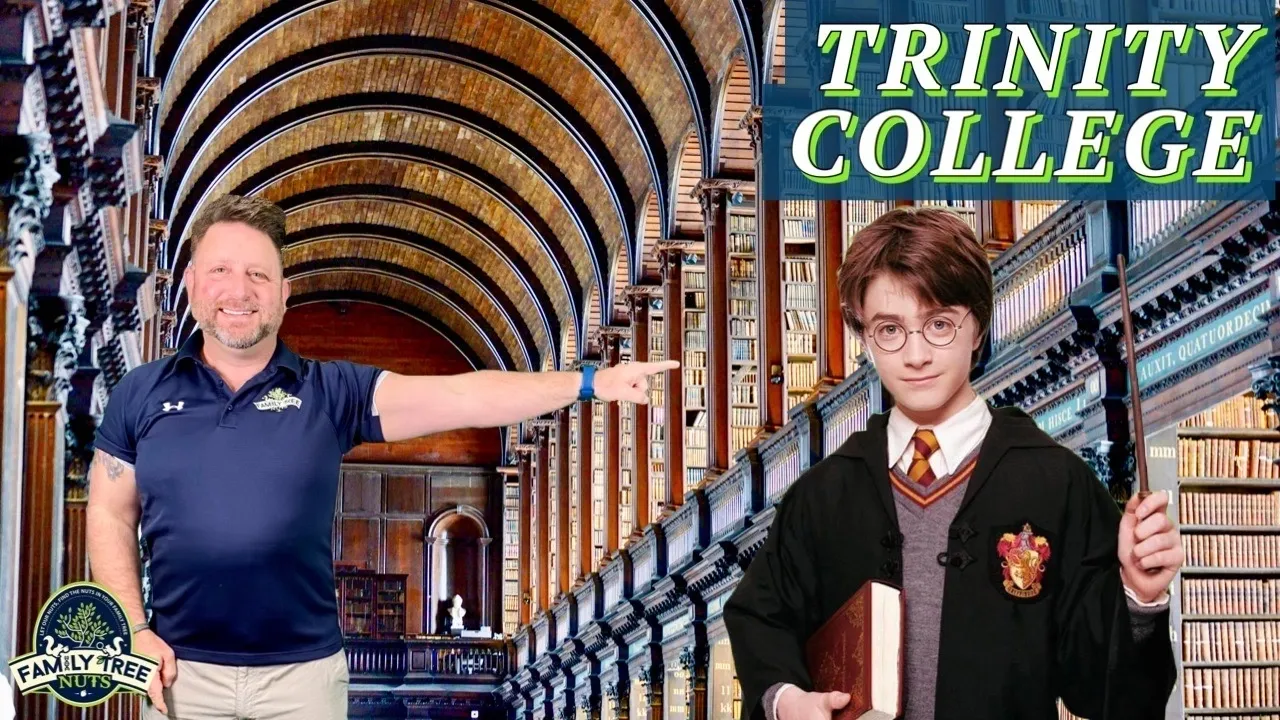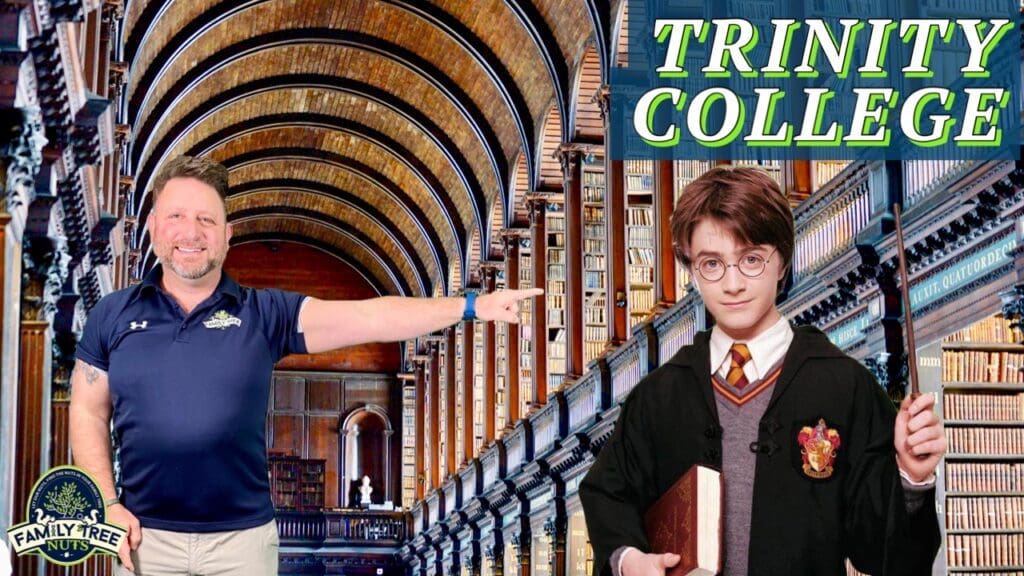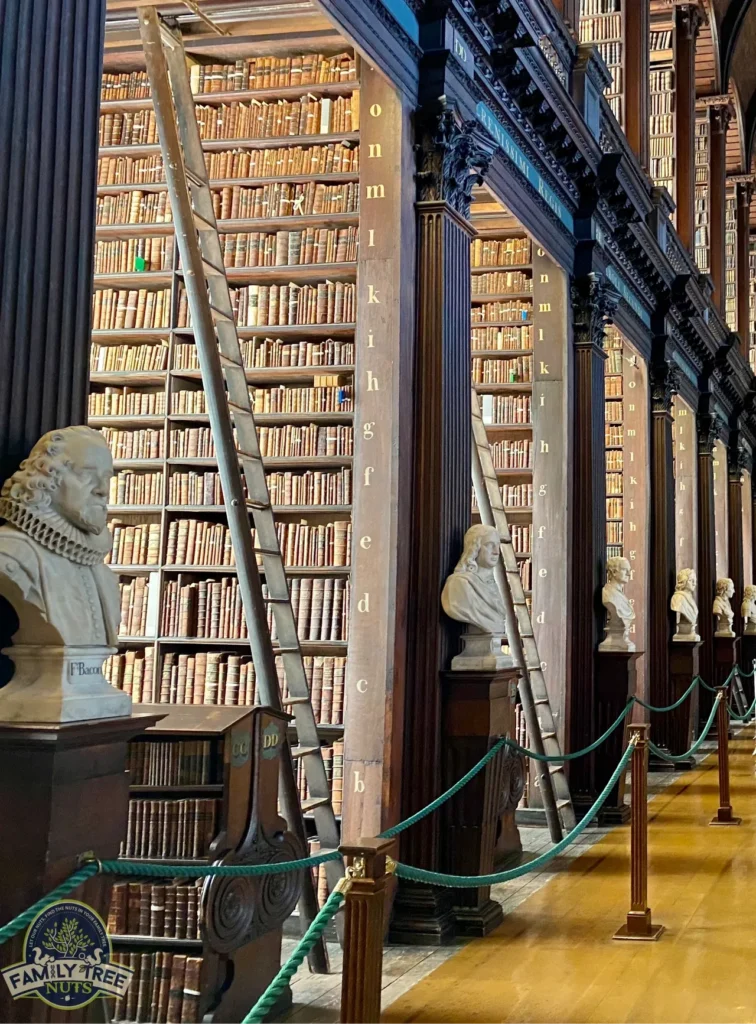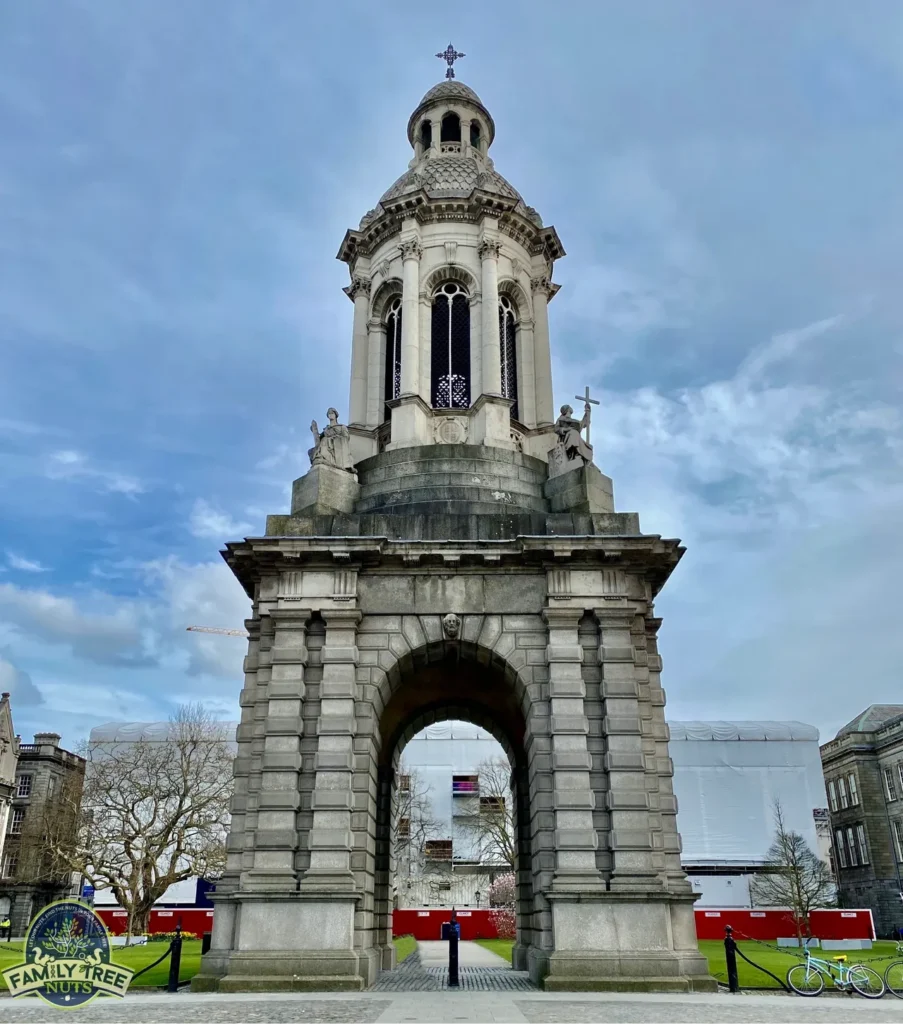
“HARRY POTTER LIBRARY”! TRINITY COLLEGE, DUBLIN, IRELAND HISTORY!

Many have called this library, the “Harry Potter Library” because it looks very similar to the one in the very popular movies. When you first walk into the Long Room it is breathtaking and you feel like you have stepped back in time to some magical place. Over 200,000 books, marble busts of great thinkers, and historical artifacts are all around you. Take a few steps out of the magnificent hall and you can gaze upon the legendary 1,200-year-old Book of Kells. There truly isn’t any place on earth quite like this.

Recently we visited Trinity College, in Dublin, Ireland, and we’d like to tell you a little bit about it. Trinity College was founded in 1592 by Queen Elizabeth I, and until modern times was for protestants only. Trinity College is also referred to as The University of Dublin and was modeled after England’s Oxford and Cambridge Universities. Since its founding, Trinity has been at the center of Ireland’s history and politics and to this day, continues as one of the most elite universities in the world.
It is said that Trinity was founded to “promote civility, learning, and Protestant piety among the youth of Ireland”. The college was built on 30 acres about a kilometer east of the center of Dublin. The grounds had once been the site of the Priory of All Hallows monastery until the dissolution of the monasteries by King Henry VIII about sixty years earlier. For the first fifty years the college only had an average enrollment of around twenty students and maintained modest numbers for its first hundred years. During the reign of King James II from 1685-1688, Trinity was in danger due to the king being catholic. The protestant faculty fled the area and the army used the buildings as barracks and a prison until King James II was defeated and ousted out of power.
Trinity remained exclusively protestant until the enrollment was opened to Catholics in 1793. However, not until 1873, another eighty years later, were Catholics permitted scholarships, or a professorship. The college continued to remain almost entirely protestant because two years earlier in 1871, the Catholic Church banned Catholics from attending Trinity. This ban was finally lifted in 1970 and Trinity now has students from numerous religious faiths. Women were permitted admission in 1904.
The campanile or bell tower is one of the most picturesque and iconic spots on campus. It is over one hundred feet tall and was built in 1853. Students have a superstition that if they pass through the campanile, while the bell is tolling, they will fail their exams, so they avoid it until graduation day, and then take a celebratory stroll through it.
The college is home to several items of Irish pride. One of those items is the Brian Boru Harp, which is the oldest surviving Irish harp, and the insignia of Ireland. It was once mistakenly linked with Brian Boru, high king of Ireland who was killed in 1014 at the Battle of Contarf, in modern day Dublin. Also, on display is one of the last remaining copies of the 1916 Proclamation of the Irish Republic. This copy was posted to the wall of the General Post Office at the start of the 1916 Easter Rising, which eventually lead to Ireland’s independence from Great Britain.

Both the Brian Boru Harp and the 1916 Proclamation of the Irish Republic are on display in the Long Room. The Long Room which is also called, Trinity College’s Old Library building, was founded in 1732 and is in use to this day. The library is sixty-five meters long, making it the longest single room library in Europe. It houses over 200,000 of the college’s ancient books and over seven million pieces of printed materials. The library is entitled to a copy of every book ever produced in the British Isles. Its marble busts of prominent intellectuals line the ends of the book shelves. The barrel-vaulted oak ceiling was added to the library in 1858 and gives the library its iconic look. No, Harry Potter was not filmed here but it definitely puts you in mind of the famous books and movies. If you get a moment when the room is quiet and if you let your imagination wander, you just might feel like you are in magical place.
One of the main attractions of Trinity College is the 1,200-year-old Book of Kells which was written by monks around the year 800 on the Scottish island of Iona. Viking invasions force the monks to flea and establish themselves in Kells, County Meath, Ireland where the book was kept until the invasion of Oliver Cromwell whose protestant army was known to turn catholic churches into horse stables. In 1653 the book was moved to the library of Trinity College for safe keeping.
The Book of Kells is a book of the Christian gospels of Matthew, Mark, Luke and John that is ornately decorated with time period artwork, done by the monks on Iona. There are a handful of books such as this written from the time period but none of them so beautifully decorated and certainly not one so preserved.
Today anyone can visit the Book of Kells and its exhibit at Trinity College. The informative exhibit has a wealth of information on the history of the book and others like it. You can lay your eyes on the book itself in the vault room, but we can’t show it to you in this video as no photography is allowed. The room is dark with a glass case in the middle that displays the open book. The pages are periodically rotated. What an amazing experience it is to lay your eyes on a 1,200-year-old book! Be sure to see our video that we have all about the Book of Kells.
Today the Book of Kells and Trinity College attracts approximately 750,000 visitors a year to see these historic wonders. It is rare for tourists to visit a university but Trinity College is an iconic cultural destination in Ireland. In its five-century history it has had scores of prominent graduates and been at the center of important events. Be sure to see the video from here at the link below.
– Col. Russ Carson, Jr., Founder, Family Tree Nuts
